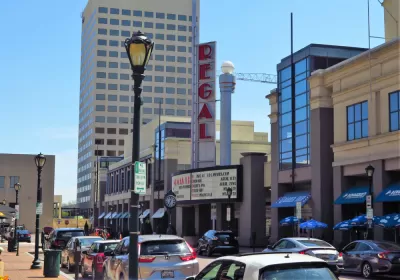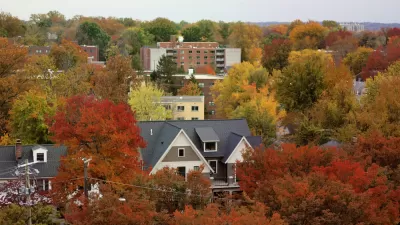In the wake of mass resignations at the county’s planning board, the county council will vote to update their growth plan to reflect the region’s changing economy and demographics.

The Montgomery County Council is poised to approve a new long-range growth plan, dubbed Thrive 2050, for the region that will account for its growing and increasingly diverse population and economy. The vote comes after the county’s planning board resigned en masse due to several scandals.
In an article for the Washington Post, Katherine Shaver writes, “The plan acknowledges massive demographic shifts in a county struggling with how to better compete for businesses and jobs while becoming more walkable, transit-friendly and environmentally sustainable.”
The plan focuses on encouraging transit-oriented development and more diverse and affordable housing types, such as duplexes and small multifamily buildings. “More of such housing in wealthier and highly desirable neighborhoods zoned solely for single-family homes would make the county and its schools less segregated by race and income, planners say.”
Residents are divided over the plan, with some voicing concerns that higher density could imperil the county’s public infrastructure and reduce quality of life. Montgomery council member Hans Riemer dismissed criticism, saying that the plan “doesn’t cause growth to happen. It seeks to manage the growth that’s coming.”
“Planners say Thrive would be the county’s first long-term plan to prioritize racial equity and social justice, including by encouraging less expensive housing in upscale areas.” The plan also directs development toward the eastern part of the county, which, according to planners, “became relatively less attractive for employers and residents, feeding a cycle of stagnation” after the county’s original plan discouraged commercial development and investment along Route 29.
FULL STORY: Suburb’s 30-year growth plan fuels debate over denser development

Maui's Vacation Rental Debate Turns Ugly
Verbal attacks, misinformation campaigns and fistfights plague a high-stakes debate to convert thousands of vacation rentals into long-term housing.

Planetizen Federal Action Tracker
A weekly monitor of how Trump’s orders and actions are impacting planners and planning in America.

In Urban Planning, AI Prompting Could be the New Design Thinking
Creativity has long been key to great urban design. What if we see AI as our new creative partner?

King County Supportive Housing Program Offers Hope for Unhoused Residents
The county is taking a ‘Housing First’ approach that prioritizes getting people into housing, then offering wraparound supportive services.

Researchers Use AI to Get Clearer Picture of US Housing
Analysts are using artificial intelligence to supercharge their research by allowing them to comb through data faster. Though these AI tools can be error prone, they save time and housing researchers are optimistic about the future.

Making Shared Micromobility More Inclusive
Cities and shared mobility system operators can do more to include people with disabilities in planning and operations, per a new report.
Urban Design for Planners 1: Software Tools
This six-course series explores essential urban design concepts using open source software and equips planners with the tools they need to participate fully in the urban design process.
Planning for Universal Design
Learn the tools for implementing Universal Design in planning regulations.
planning NEXT
Appalachian Highlands Housing Partners
Mpact (founded as Rail~Volution)
City of Camden Redevelopment Agency
City of Astoria
City of Portland
City of Laramie





























